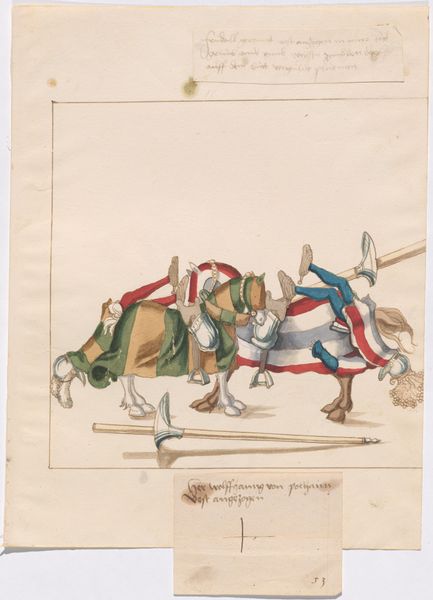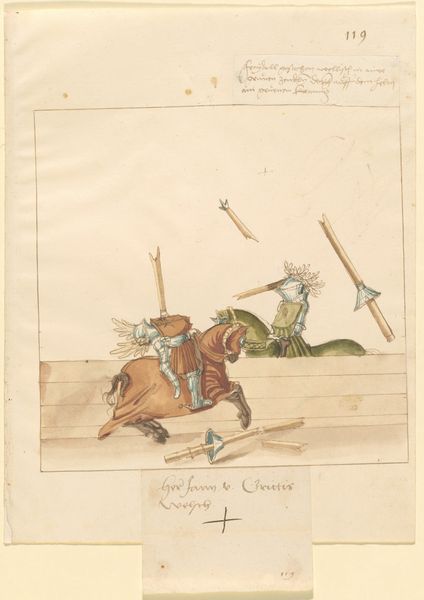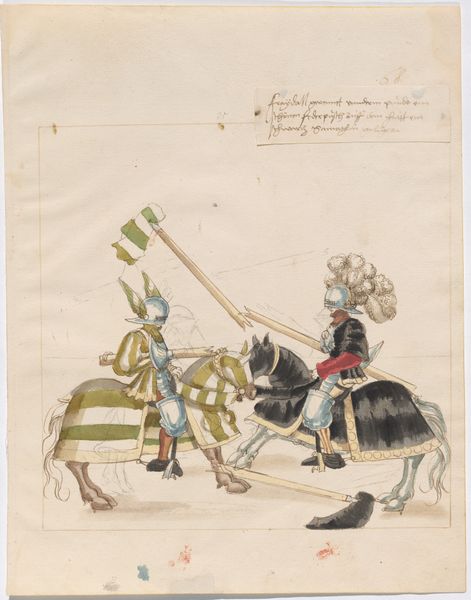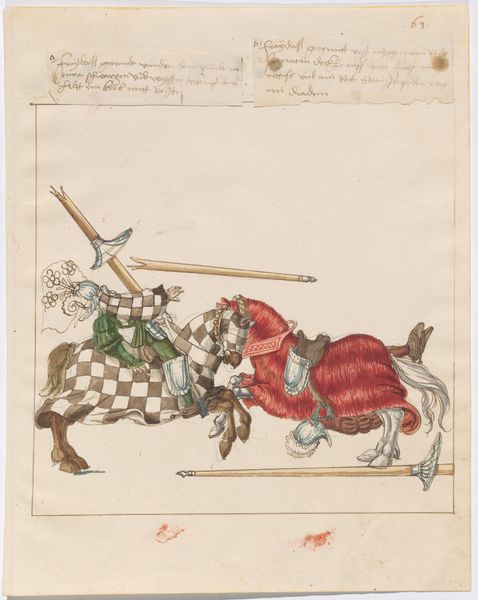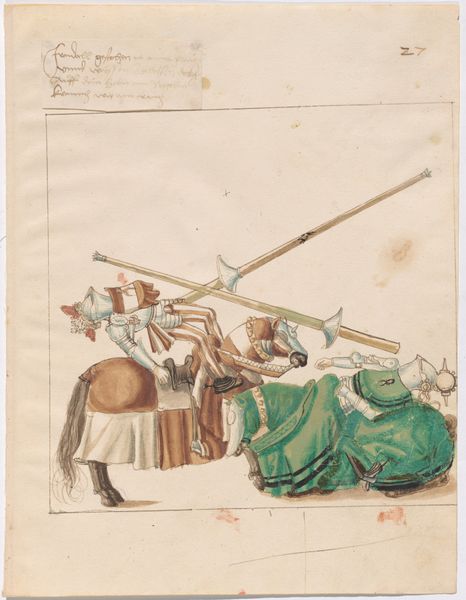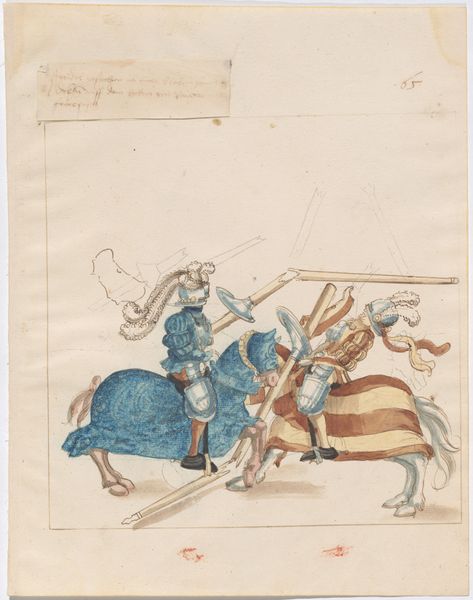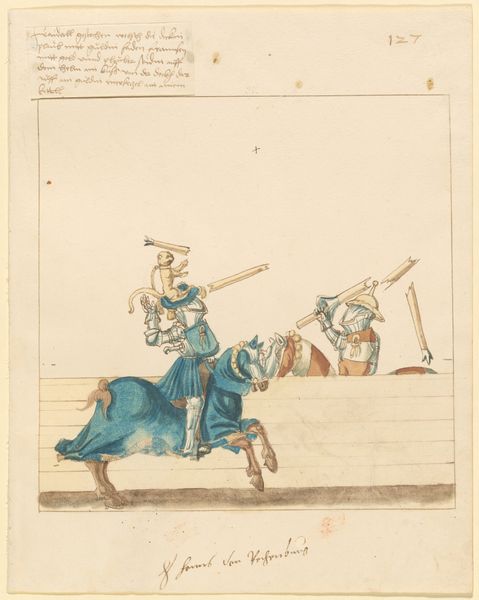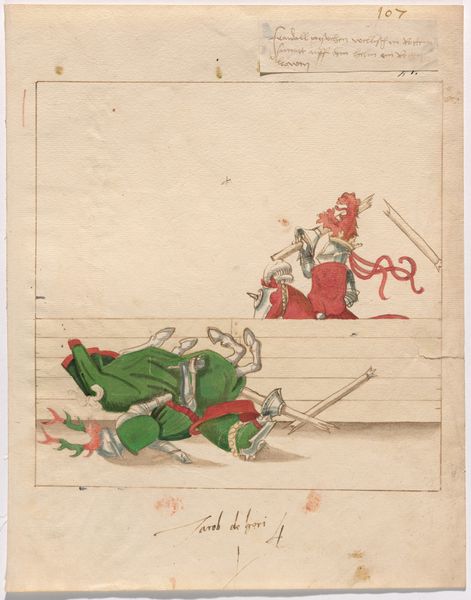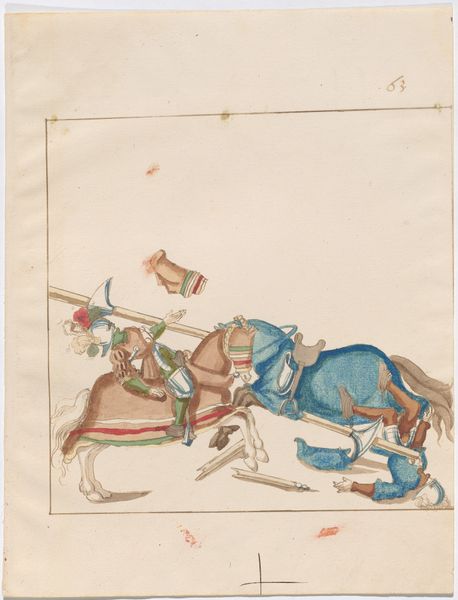
drawing, coloured-pencil, watercolor
#
drawing
#
coloured-pencil
#
water colours
#
figuration
#
watercolor
#
coloured pencil
#
history-painting
#
watercolor
Dimensions: sheet: 34 × 26.2 cm (13 3/8 × 10 5/16 in.)
Copyright: National Gallery of Art: CC0 1.0
Curator: Here we have a rather intriguing drawing titled “Mock Joust of War with Fixed Shields,” dating back to somewhere between 1512 and 1515. Its creator remains anonymous, and the piece is rendered in colored pencil and watercolor. Editor: Well, it looks a bit… anticlimactic. Two knights mid-tumble, almost balletic, and certainly less dramatic than I’d expect from anything war-related. Is this some sort of instruction manual gone wrong? Curator: Not exactly wrong, no. It might seem strange at first glance, but what we’re seeing isn’t necessarily incompetence. The 'fixed shields' detail is key. Jousts like this were often ceremonial. The participants' goal was controlled dismounts. Success often involved stylized actions. Think of it as an athletic display wrapped in layers of social ritual. Editor: A highly choreographed fall. So, it's more performance than battle, more theatre than terror? And the artist is interested in preserving the specifics. The horses almost look like they're mid-curtsy too. Curator: Precisely. Consider the history of chivalry—warriors crafted codes, symbols, rituals. What stories did they tell? Jousts were not about chaos, but rather contained, meaningful movements within specific frames of war, power and honor. In a way, all these figures were communicating something important. Editor: The watercolor gives it all a storybook feel, but the very formal structure creates this really odd dissonance. Like a beautifully illustrated page from some absurdly bureaucratic fairy tale. Curator: Indeed! The drawing is sparse, isn’t it? Yet full of rich meaning when we understand the traditions depicted. See, even a "mock" war engages our deeper instincts regarding rivalry, strategy, honor... Editor: So this isn’t a record of reality as much as a symbolic staging, an artificial representation? Maybe it's an investigation into constructed codes and performances rather than straightforward observation of warfare... I quite like that. Curator: Exactly! The power here is that the anonymous artist captured an important shift. In those historical moments, even play combat had deeply important significances beyond what may initially meets the eye. Editor: Now when I look again, this doesn't feel as funny anymore; more thoughtful than it seems on its surface. Thanks.
Comments
No comments
Be the first to comment and join the conversation on the ultimate creative platform.



